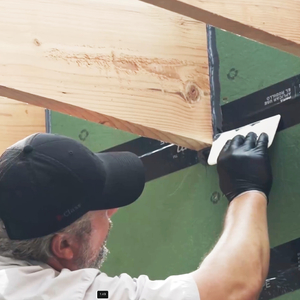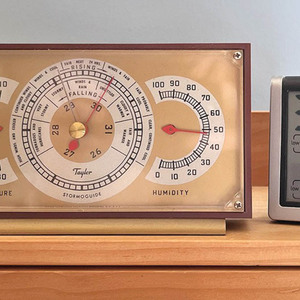Anybody know about glass bead insulation
I have an 85 year old cape, and the first floor exterior walls were insulated with Urea-Formeldehyde in the 70s. From the basement, I could see one stud bay was left uninsulated because it had live knob and tube in it. The Knob and tube is no longer connected to any live circuits.
I had a need to get another circuit to the second floor, so I tore the plaster off the gable end wall on the second floor. This may seem radical, but there was no insulation behind this wall. I have fished a 12-2 wire through the empty bay, plus some flexible conduit conduit for future low voltage uses.
I would like to insulate this bay before I close the wall back up. I have a large opening in the basement, and I can drill a few more 1 inch holes through the bottom plate of the 2nd floor wall + the top plate of the first floor wall. It doesn’t pay to get a contractor out to spray foam for one stud bay.
I recall hearing about a “glass bead” insulation back in the 70’s that would be perfect. These beads were like puffed rice. There are completly inert, and no water is required for installation.
I could use spray foam to fill in the bottom of the bay, and spoon feed the beads through a 1″ pipe (We are talking one bay here). Unlike loose Cellulose or Fiberglass, the beads would not get caught on the plaster lath or the knobs and wire, so there shouldn’t be any voids.
I have searched the web for these glass beads, but I am coming up empty. I am looking for the wrong thing, or was there a problem that caused this type of insulation to disappear from the market? Heck, Id even consider filling the cavity with sand, which would give me some R value.


















Replies
Bada Bump
There is another option: slow rise slow cure poured polyurathane. Pour it in and it takes hours to cure as it gently rises to fill the stud bay.
I haven't used it myself, but some others here might have.
Rebuilding my home in Cypress, CA
Also a CRX fanatic!
Is the glass bead insulation you're talking about Vermiculite? That's a naturally occuring glass or mica-like mineral with insulating qualities. It's been squeezed out of the market amid concerns of asbestos contamination.
If you have the sheetrock torn off, why can't you just install fiberglass? If you want a higher-perfomance insulation you can cut rigid foam insulation to fit your stud bay loosely and use cans of spray foam to seal the edges.
I don't think sand in your walls would give you much R-value. I could be wrong though. Maybe you're onto the next big thing!
No, he does not mean vermiculite. I remember the stuff being hyped in the 70's as well. What I think they were actually marketing was simple Perlite ... a fire-expanded form of basalt that is a fine insulator. Sold in garden shops, ot looks, and feels, like granules of styrofoam- except you can hit this stuff with a blowtorch. I'd buy the stuff in bulk, though. While a bag sells for maybe $18, an entire ton trades for maybe $50. All things considered, I cannot imagine why this stuff has not replaced every other kind of blown-in insulation.
Type of insulation
R-valueper inch of thickness
Vermiculite, loose fill
2.08
Perlite, loose fill
2.7
Fiberglass, blankets and batts
3.33
Fiberglass, blown loose fill
2.2
Fiberglass, boards
4.5
Rock wool, batts
3.66
Rock wool, blown loose fill
2.93
Polystyrene boards
3.45
Cellulose, blown loose fill
3.6
Urea-formaldehyde foam
4.48
Urethane foam
5.3
I got the chart above off http://www.sizes.com/units/rvalue.htm. It shows the R-value of Perlite as fairly low. Maybe that's why I've never seen it used as insulation around here. I have used it to modify soil plenty of times though."This is a process, not an event."--Sphere
Perlite is the stuff I was thinking of. As Woodguy points out, the R value is rather low (but better than sand). That probably is why you don't hear much about it anymore.
Perlite is just the thing for my application. With dead knob and tube wires still in the stud bay, any type of expanding foam will leave voids. If I was talking about doing more than one bay, then it would make sense getting a contractor in to blow in something better.
The studs in my house are a full 4 inches, so Perlite would add about R-10 to that wall. Filling this open bay with anything would reduce any convection drafts. Using Perlite will improve my fire safety, since the open bay is directly over my electric panel.
With a 1.25 inch hole through the bottom plate of the 2nd floor wall, I can connect the two holes with a piece of flex Conduit. Then I just pour the beads of perlite into the conduit. No holes need in the stucco outside, or the plaster wall in the living room.
I now know what to ask for. Now I just have to find it without Miricle Grow sprayed on it.
Low R value? I seem to recall the guys selling it (back in the 70's) were claiming an R value comparable to foam.
Maybe it wasn't perlite.
Maybe the R-values claimed were in error.
Maybe my memory is wrong.
Maybe we've found the perfect insulation. The description given in wickipedia makes the stuff sound almost like a glass 'foam.' Expanded mineral, with millions of microscopic bubbles. I think you'll find it a better insulator than you expect.
There is a very good reason that vermiculite or perlite will not replace any other insulation.Twenty or so years ago I worked on a hospital with an adjoining parking garage. The structural wall between the hospital and garage was concrete block.Metal studs and drywall was added for interior finish on the hospital side. The wall was not insulated.In order to insulate without removing the drywall ,vermiculite was the option available.The vermiculite was poured into the wall from the top after removing a few ceiling tiles.The stuff flowed easily thru the holes in the studs and was topped off.These rooms were offices that were completely done and furnished except for phone outlets.
Telephone installer comes in and cuts a hole for the box.Vermiculite starts coming out,phone guy starts screaming.By the time I got there the vermiculite covered the carpet and was half way up the chairs.Eventually after cleaning up this mess, the vermiculite repoured into the wall.
mike
My old boss was into investing in tax breaks in the late 70's and I remember one of them being a ceramic bead insulation wherein the pores in the beads had a membrane across the openings that reflected infrared radiation. Sounds to me like this is what you are remembering. It was pourable from bags directly into the attic. Also recall that as it settled and somewhat clumped together, cracks could form - maybe that was its downfall?
Anyway, the boss never seemed to make money on his tax breaks and I never heard more about the insulation.
I think you meant to address your post to renosteinke--I don't remember much from the 70's except Sesame Street!"This is a process, not an event."--Sphere
This is the stuff you want to use. Made specifically for your type of application. It dose not expand so much as it is pumped in.
http://www.retrofoam.com/
Have you used the Retro Foam? What does it cost? vs cells or icyene?
I have not had a chance to use it on a project. Cost is dependent on the specific job. If a building is three stories high then the contractor has to factor in ladders or scaffolding.Also what is the exterior wall made of. This is assuming they don't install from the inside. Which usually they don't because it is a preexisting building that is trying to save the interior. If it is a gut rehab then retrofoam would recommend the homeowner to an icyene installer.
If I was talking about more than one stud bay, I would consider the RetroFoam. There is even a dealer that installs it within 5 miles of my home. Thing is, A 4 cu foot bag of gardening Perlite can be purchased on eBay for about $30 delivered.
http://cgi.ebay.com/ws/eBayISAPI.dll?ViewItem&item=260096392900
To get a contractor and his equipment out to my house for one stud bay would cost many times that price. I'll keep the foam in mind if I buy another old house that needs insulating.
Perhaps you are remembering Beadwall from Zomeworks.
http://www.commonwealthsolar.com/cwbead.htm
As illustrated in the link, it was more commonly used to fill up windows, and was conceived back when an R2 (center of glass measruement) window was the best you could get.
Hilltop